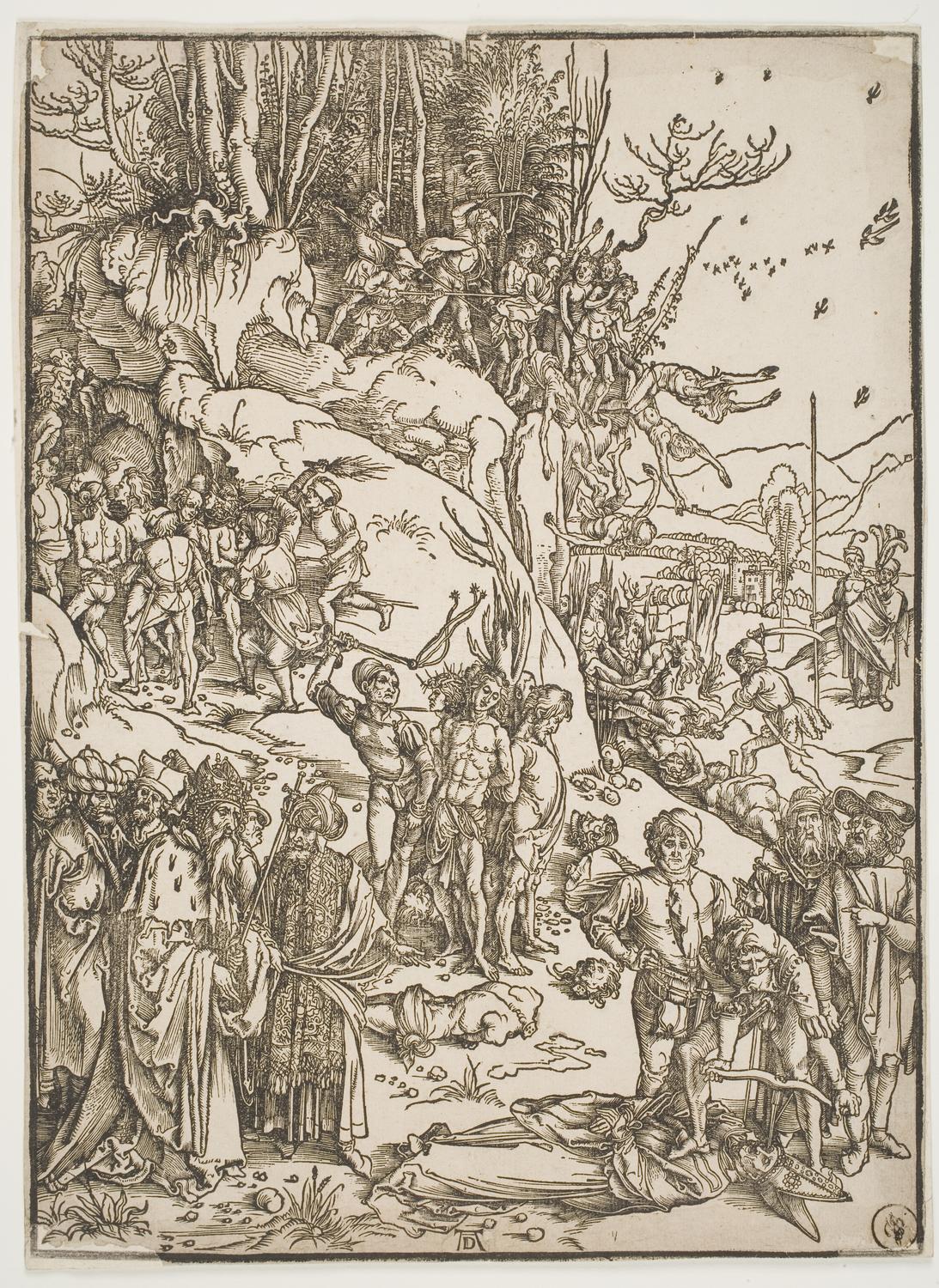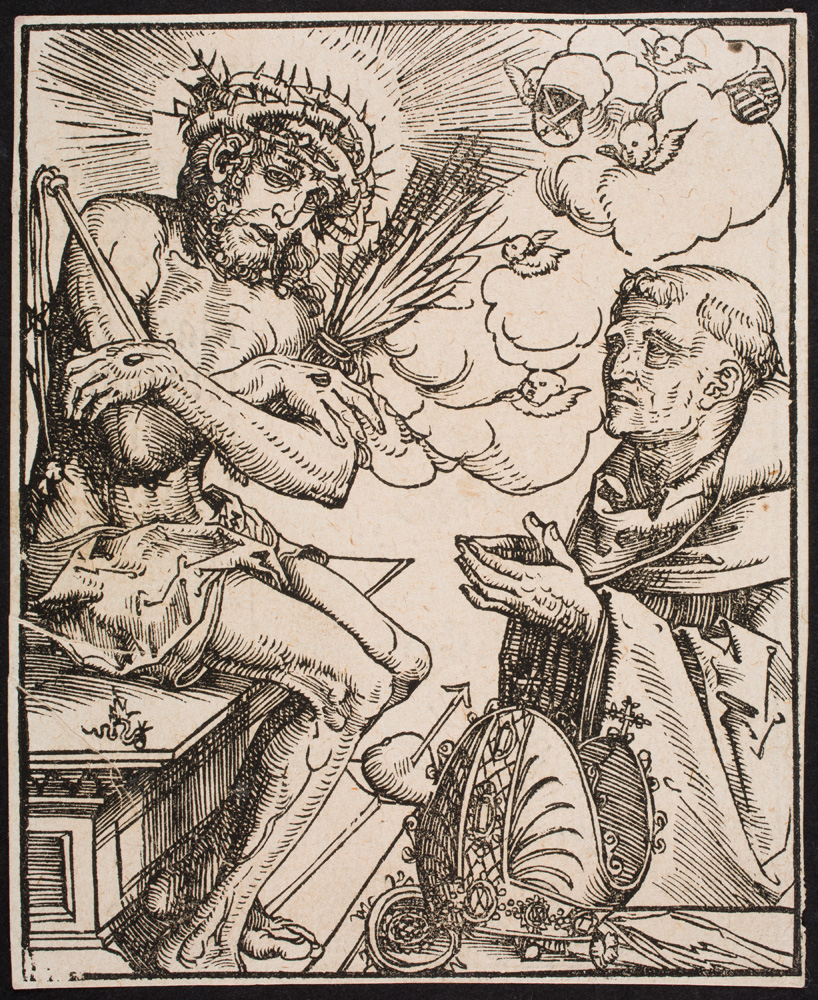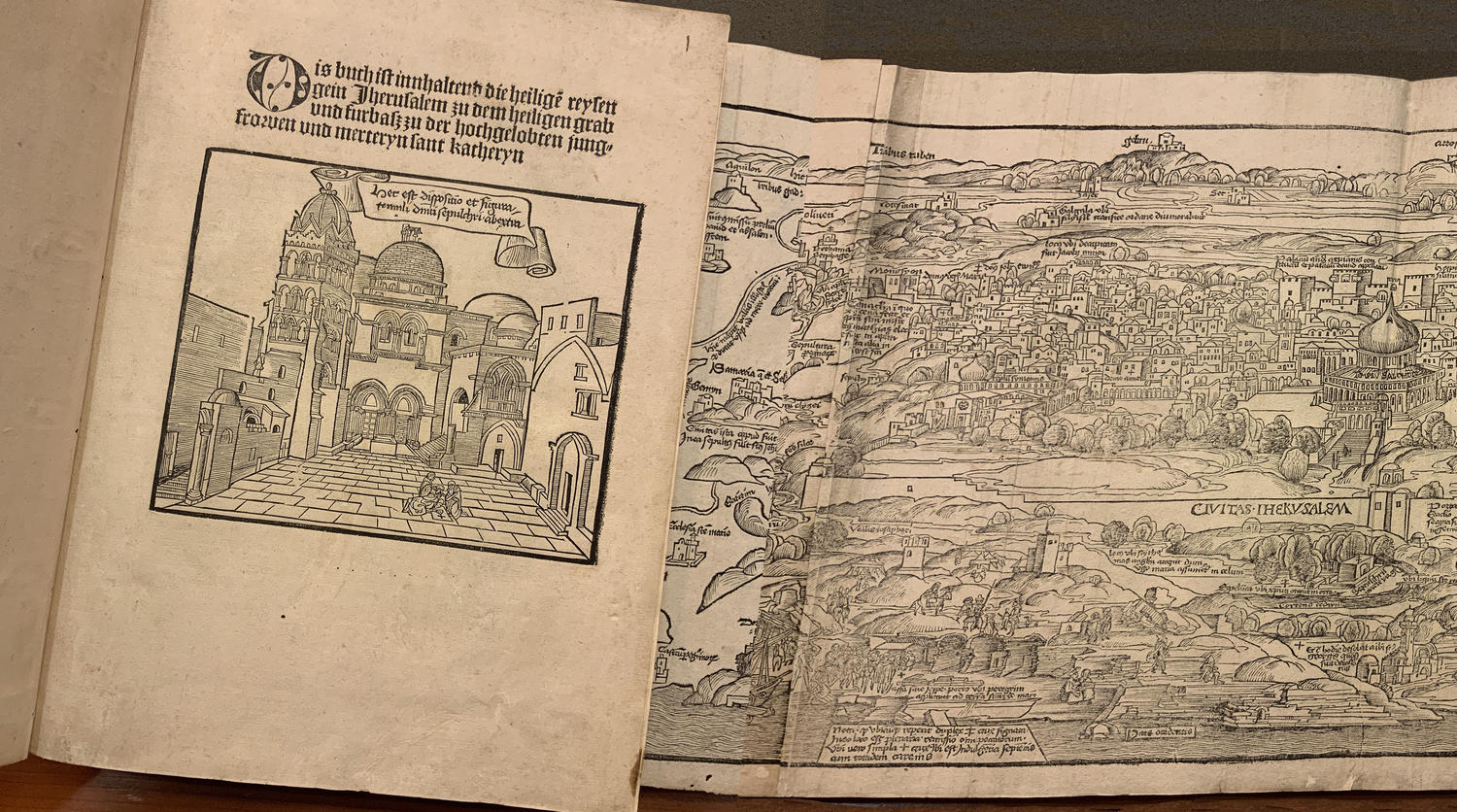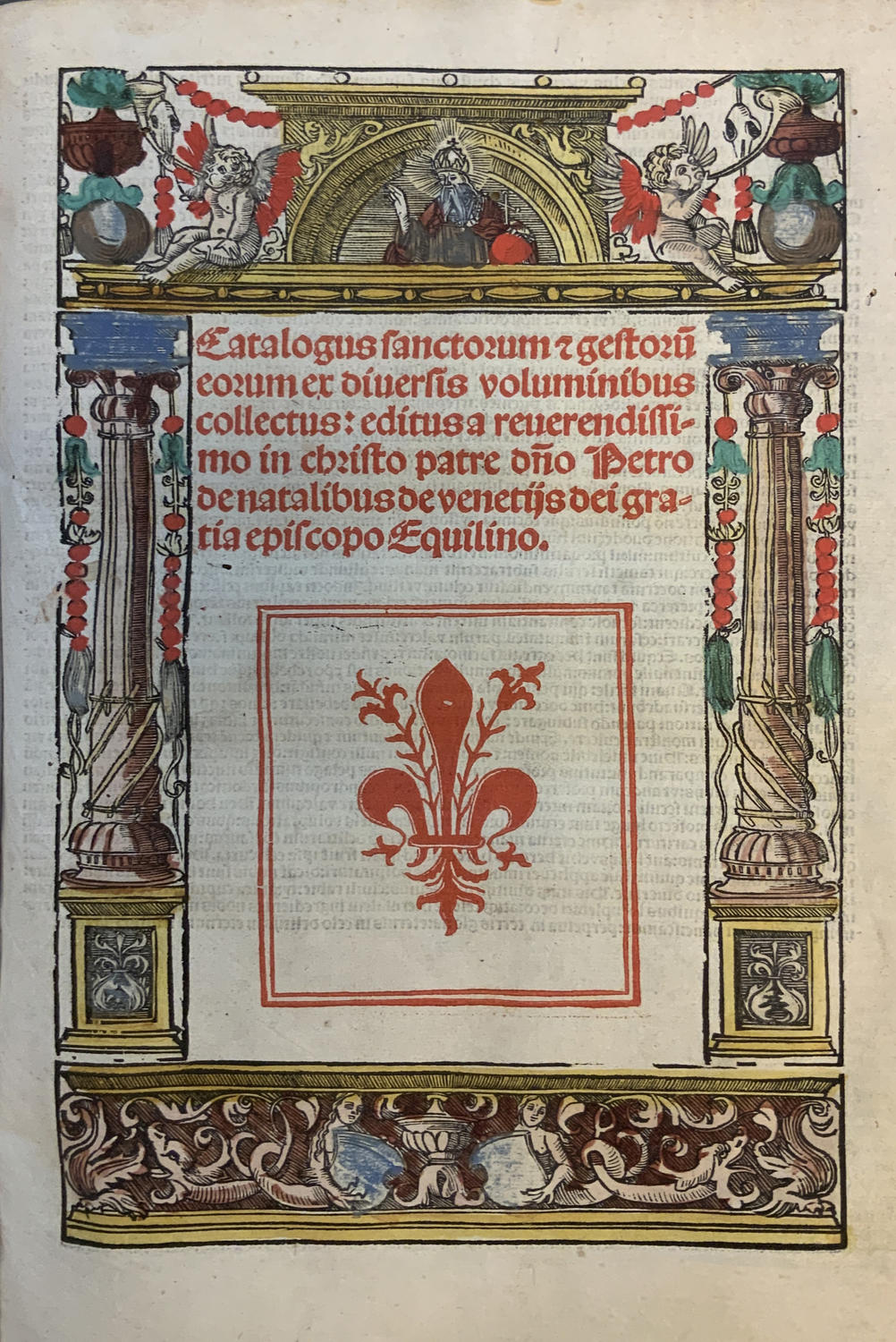The Davis Museum is closed for Wellesley College’s winter break. Please join us at our spring opening celebration on February 5, 2026, at 4 pm.
Pre-Reformation Piety

Albrecht Dürer, The Martyrdom of the Ten Thousand, ca. 1496, Woodcut, Gift of the Estate of Susan Minns 1941.7
In late medieval Europe, Christians’ relationship with divinity and their path to salvation was mediated, for the most part, by a class of clergy, led by the pope on earth and the saints in heaven. To ensure their salvation, Christians increased their favor and contact with these powerful intercessors through pilgrimage, devotion to the cult of saints, and material donations to the Church. From the clergy they also received the sacraments—ritual vehicles of God’s grace such as baptism, the Eucharist, and penance—and could receive indulgences. Declared by popes as a means of remitting punishment for sin, indulgences provided repentant Christians with relief after death in Purgatory, an intermediate state of purification endured by the faithful before being admitted to heaven. In the late Middle Ages, the commercialization of indulgences by agents of the Church had become a target for various reform agendas.
Artworks played a multivalent role in late-medieval devotion, sometimes illustrating the various objects or objectives of devotion, and sometimes becoming the subject of devotion themselves.

Lucas Cranach the Elder, St. Bernard Adoring the Man of Sorrows/A Reliquary with Crucifixion, ca. 1507–12, Woodcut, Bequest of Ann Kirk Warren (Ann Haggarty, class of 1950) 2016.435
In 1505, Lucas Cranach was appointed court artist to the Elector Frederick III of Saxony in Wittenberg, where he remained a prominent member of civic society throughout his life. Around this time, Frederick, a devout Catholic and collector of saints’ relics, commissioned Cranach to create a catalogue of his collection to present to visitors. The resulting publication—known as the Wittenberg Reliquary Book—contained woodcut illustrations such as this one, paired with descriptions of the luxurious containers and their contents. Martin Luther, also a recipient of Frederick’s patronage, opposed relic devotion and the indulgences gained from it. Frederick ended the veneration of relics in Saxony in 1524.
In 1508, Frederick also commissioned a painting based on Albrecht Dürer’s woodcut of the Martydom of the Ten Thousand (seen above) for the altar at All Saints—the church in Wittenberg where Luther likely posted his theses in 1517. It is probable that Frederick selected the print’s motif for his altarpiece in order to highlight his profuse collection of relics.



Bernhard von Breydenbach, Peregrinatio in Terram Sanctam (Pilgrimage to the Holy Land), 1497, Printed in Speyer by Peter Drach, Margaret Clapp Library, Wellesley College Special Collections
The Peregrinatio is an early printed book—or incunabulum—that gives an account of the German nobleman Bernhard von Breydenbach’s pilgrimage to Jerusalem. In this popular narrative—reprinted thirteen times from the first publication in 1486—Breydenbach recounts his journey of atonement, and provides intricately advanced maps (designed by Erhard Reuwich (1445 – 1505)) along with travel information for future pilgrims. Here, Reuwich’s depiction of Jerusalem designates the sites of Christian pilgrimage with information about the indulgences one could obtain from each location.

Petrus de Natalibus, Catalogus Sanctorum et Gestorum Eorum (Catalogue of the Saints and their Deeds), 1519, Published in Lyon by Jacob Saccon, Margaret Clapp Library, Wellesley College Special Collections
Written by Petrus de Natalibus in the late 14th century, the Catalogus Sanctorum is a collection of saints’ stories known as hagiographies—a popular literary genre of the late Middle Ages. Though little is known about Petrus, he was likely a bishop from Venice. His Catalogue of the Saints received wide circulation for more than a decade. This printed example was made in Lyon, France, and features a number of hand-colored woodcuts illustrating scenes from the various saints’ lives.